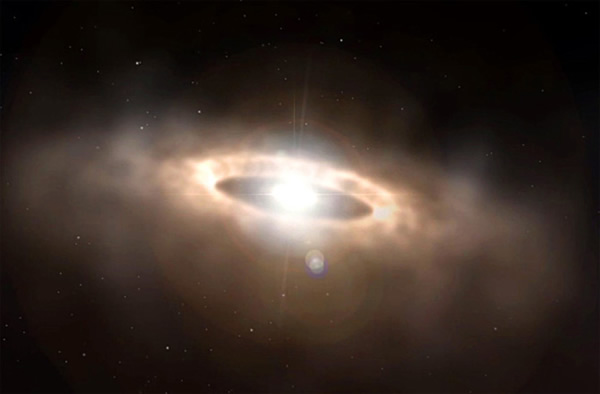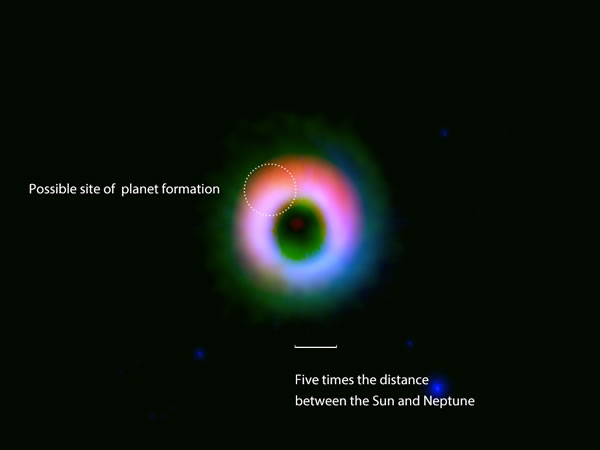Enormous Ring of Dust Could be a Stellar Pregnancy
An enormous ring of dust and gas encircling a distant star may be forming planets at this very moment, based on what one Japanese team recently found in their observations with the Atacama Large Millimeter/submillimeter Array (ALMA) in Chile.
The ring, which surrounds the star HD 142527 over 456 light-years away in the southern constellation Lupus, is asymmetric in that it has a portion that is noticeably denser than the rest. This northern region, which shines brightly for ALMA in submillimeter-wave radio emissions, is located incredibly far from the star itself — about 22 billion kilometers, or five times the distance between the sun and Neptune.
“We are very surprised at the brightness of the northern side,” said Misato Fukagawa, the leader of the team and an assistant professor at Osaka University. “The brightest part in submillimeter wave is located far from the central star, and the distance is comparable to five times the distance between the Sun and the Neptune. I have never seen such a bright knot in such a distant position.”
The dust and gas disk around HD 142527. The dust and gas observed by ALMA are shown in red and green. Near-infrared data from the NAOJ Subaru Telescope is shown in blue. Credit: ALMA (ESO/NAOJ/NRAO), NAOJ, Fukagawa et al.
A “bright knot” indicates the densest clustering of material in that portion of the ring — just the right kind of scenario to spark the formation of protoplanets, based on current models.
“When a sufficient amount of material is accumulated, planets or comets can be formed here,” Fukagawa added.
This is also the first firm evidence of planetary formation observed so far from the central star in a protoplanetary disk.
Based on measurements of the dense knot’s submillimeter emission strength and temperature, Fukagawa’s team concludes that either rocky planets or giant Jupiter-sized worlds are actively forming around HD 142527.
While gaps in the protoplanetary disk around this star have previously been observed, indicating the likelihood of planetary formation, this is the first time direct observations have been made within the internal part of the dust ring itself.
These findings put one more card in the deck of what astronomers know about how planets form around other stars — and thus how our planets in our own solar system probably formed as well.
Also, because of its particular sensitivity to radio waves emitted by cold clouds of gas and dust, ALMA is the perfect instrument with which to investigate protoplanetary disks.
“HD 142527 is a peculiar object, as far as our limited knowledge goes,” said Fukagawa. “However, other asymmetrical protoplanetary disks have been discovered since the early ALMA science operation started. Our final goal is to reveal the major physical process which controls the formation of planets.”(Jan 18, 2014 10:31 AM ET // by Jason Major)













